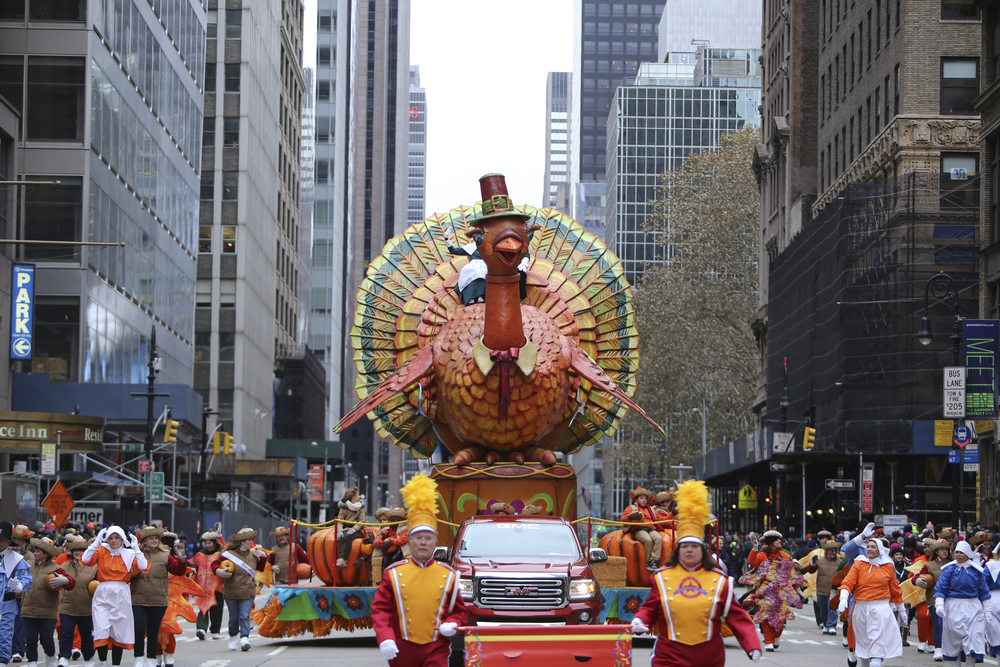
Photo credit: A. Katz
This year, as you go around the table thinking about the things in your life for which you are grateful, consider a little shout-out to “science” — because it can inspire some super-cool conversations, like the one you might have this Thanksgiving! After all, did you know that almost all of your favorite turkey day traditions have some connection to chemistry, physics or biology?
Not convinced how “science” and “Thanksgiving” can overlap on a Venn diagram? We’ve got you covered.
The Big Parade
This one makes sense, right? Without science, how can those fabulous floats filled with air even stay upright? Wait, are they even full of air? Turns out, even the parade is aided by a helping heaping of science. According to this story:
“Each balloon is a series of chambers engineered to hold the desired form. The individual characters contain 10,000 to 16,000 square feet of helium, a gas lighter than air that allows the balloons to float.”
So there you go: Helium keeps them afloat. Read the article for more interesting fun facts.
Crazy for Cranberries
Did you know there are more than 100 varieties of cranberries? Or that they grow in bogs? Or why they’re red? Learn more about your favorite side dish right here.
Like this fun fact:
“The average pH of a cranberry bog is around 4.5, the same acidity preferred by rhododendrons and azaleas, which are cranberries’ distant cousins. Cranberries are more closely related to blueberries, which share the same genus.”
Who knew? Well, you do, now that you’ve read this.
Let’s Talk Turkey
The turkey thermometer is a thing of wonder, right? Why does it do what it does? How can it predict doneness? Can it be reused? Why is it that Uncle Bob’s turkey is NEVER done, despite the thermometer’s prediction? You can learn all about the fascinating turkey thermometer here. Well, all except what’s up with Uncle Bob’s food. Because we suspect that may be operator error.
Marshmallow Man
If you happen to have an airtight glass bell jar, a vacuum pump and some marshmallows left over from the sweet potato casserole, check this out. In basic terms, a marshmallow is made of mostly sugar and air, and sugar molecules are arranged in a way that traps pockets of air inside a marshmallow. These pockets of air can be thought of as many little sugar balloons. So by using a vacuum, you can witness first-hand the impact of air pressure on marshmallows. Hint: If you’ve seen Ghostbusters, we’re guessing Marshmallow Man may have grown to such epic proportions in the absence of air.
The Science of Sleepiness
Ready to have your mind completely blown? You’ve heard of tryptophan, right? Well, as this video suggests, it turns out that the chemical has little to do with the food coma you find yourself slipping into, post-turkey-dinner. Crazy talk? Check out the video to find out exactly what DOES make you so sleepy, then come prepared on Thanksgiving to dish about your favorite dish.
After-Dinner Antacids
Dinner is done, the faux-tryptophan coma is about to begin — but first, after overeating just a bit, you’re tempted to pop a Tums. But how does an antacid work? Check out this video by the American Chemical Society (ACS), called “The Chemistry of Thanksgiving.” While the video talks about the science behind traditional Thanksgiving foods like turkey and potatoes, it also contains a fascinating discussion about which antacids neutralize the most stomach acid. We’re just sayin’: This might be valuable information.
The Gift that Keeps on Giving
Thanksgiving is over, but the fun has just begun! While you’re cleaning up, or even days later, you can check out 6 Experiments You Can Do With Food. Who doesn’t want to conduct an experiment with turkey bones, corn, whipping cream and so much more? There’s more to do with leftovers than to make the perfect Thanksgiving sandwich!
This year, make it a Thanksgiving tradition to add some science fun to your day spent with family and friends. And to think we haven’t even begun to consider the next science-holiday connection, like the chemistry of Christmas tree preservatives and champagne bubbles; stay tuned!
Interested in more engaging STEM activities? Check out the Nevada STEM Hub for experiments for all ages!